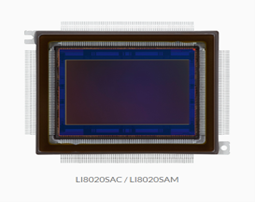The new CMOS sensors achieve an ultra-high resolution of approximately 250 megapixels, enabling the image capture of wide areas while also preserving fine details throughout the image. With a pixel pitch of 1.5 μm (micrometers), a total of approximately 250 million pixels can be accommodated on an APS-H size sensor, making the sensors suitable for a wide variety of applications. From inspections of flat-panel displays (FPD), which continue to require increased precision due to the growth of 4K and 8K technology, to industrial inspections, video productions and digital archiving, wide-area monitoring and microscopes, the potential uses for the new sensors help meet a wide range of user needs.
The LI8020SAC and LI8020SAM realize image capture with an ultra-high resolution of 250 megapixels—approximately 125 times that of full HD (1920 x 1080 pixels) and approximately 30 times that of 4K (3840 x 2160 pixels)—allowing users to crop selected areas and digitally zoom to expand images while still retaining sufficiently high resolution.
As CMOS sensors increase in pixel count, the amount of signal also increases, leading to such problems as signal delay and slight discrepancies in timing. However, the new sensors, while delivering an incredibly high pixel count of approximately 250 million, features miniaturized circuitry and enhanced signal processing technology to achieve an ultra-high pixel readout speed of approximately 1,250 megapixels per second. This enables the sensors to realize ultra-high resolution image capture at up to approximately 5 frames per second (FPS), even during full pixel readout.







